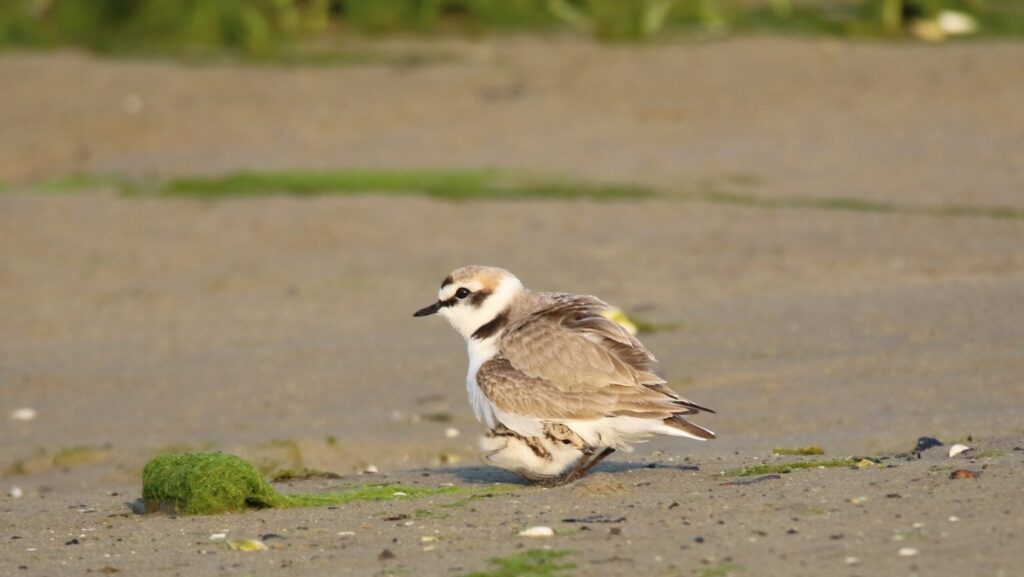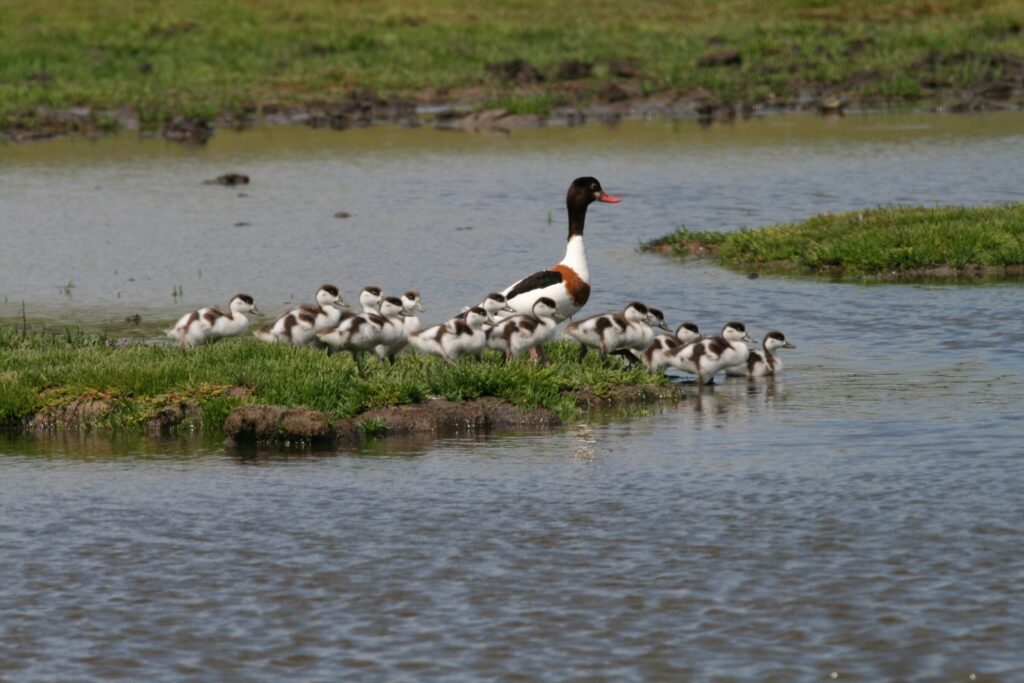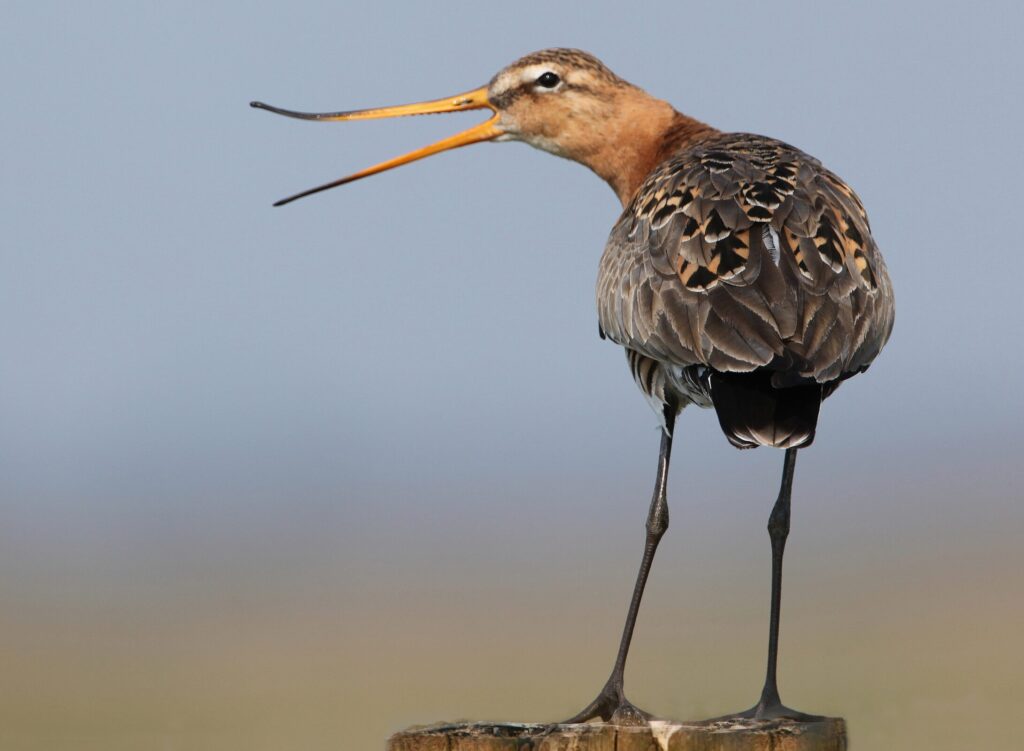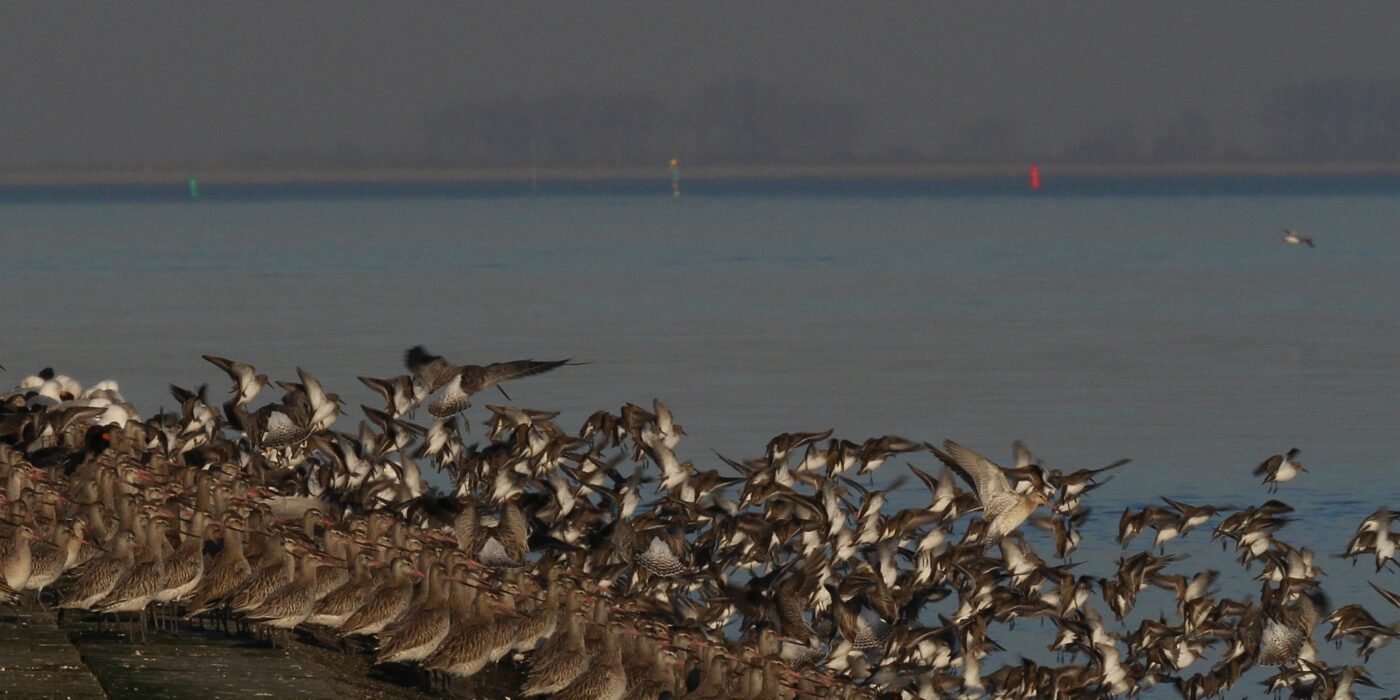
Migratory birds, breeding birds and regular guests
Kentish plovers, bar-tailed godwits, cormorants and eider ducks. Brent geese, spoon bills, kestrels and oystercatchers. Common terns, avocets, grebes and kingfishers. For many birds the Eastern Scheldt is vital. It is an area they can breed, on the beach, between the stones or rather behind the dykes. It is an area they can raise their young. Where they can sit and rest and refuel, on their way from the north to the south or vice versa.

Where do you find birds?
Where you can go bird watching, kind of depends on the tide. At low tide birds gather their meals on the exposed mudflats and sandbanks. If the tide is up and the water high, then they rest behind the dykes, in brackish marsh areas such as inlays and clay fields. With a keen eye and a pair of binoculars you can spot them like this – simply from the dyke at an appropriate distance, on a bird watching excursion or a boat tour.
Bird watching: the 5 best places
1. The Southcoast of Schouwen is the bird paradise of the southwest Delta. Not only on rich feeding areas such as sandbanks and mudflats are there thousands of shore birds, also land inwards in the inlays many sorts of birds can be found. At the Weversinlaag or the Bootsinlaag.
2. Neeltje Jans is well known for the breeding colonies of gulls, but also the little tern and great ringed plover regularly breed on the island. You can hear the linnet, goldfinch and starling in the sea-buckthorn, and with a bit of luck you can spot a wheatear in the dunes in autumn. Do not skip the Vluchthaven as there is often a pearl diver or guillemot to be seen here.

3. The Rammegors is a pearl between Tholen and Sint Philipsland. Since a couple of years the tide has free rein, slowly transforming the area into salt marshes. From the dyke you can spot the peewit, common ringed plover, spoonbill and egret.
4. Inlay Keihoogte at Wissenkerke on Noord-Beveland is especially interesting at high tide when many birds roost here. There is a nice birdwatching hut where you can see, for example; the redshank, oystercatcher, bar-tailed godwit, avocet, curlew and great ringed plover.
5. In the drab, salty, uneven meadows of the Yerseke Moor (Zuid-Beveland) many waders have made their home as well as songbirds and birds of prey. If that is not enough, many geese and ducks visit the area in winter.

